Monuments in Madagascar showcase the richness of the island’s history involving royal heritage, colonial influence, and local traditions. As one of the biodiversity hotspots of the world, Madagascar also possesses an intricate cultural landscape with sites of sacred tombs, memorials, and historic monuments. From the Royal Hill of Ambohimanga to patriotic buildings in Antananarivo, these monuments narrate the history of the island and reflect the endurance of the Malagasy people. In cities and highland villages, every site speaks of a saga of power, brotherhood, or freedom.
12 Must-Visit Monuments In Madagascar
Here are the most notable and historic monuments in Madagascar that offer a captivating glimpse into the soul of Madagascar.
1. Queen’s Palace (Rova of Antananarivo), Antananarivo
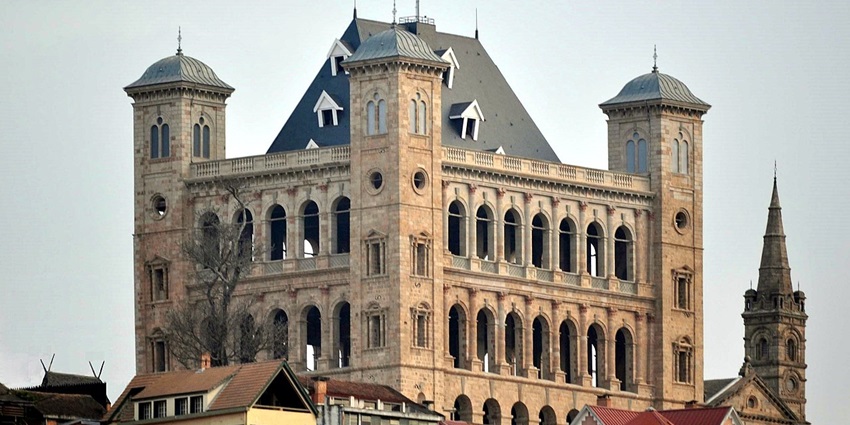
Photo: Hery Zo Rakotondramanana / Wikimedia Commons
Dominating the tallest hill in Antananarivo, the Queen’s Palace (formally, Rova of Antananarivo) is one of Madagascar’s most iconic historical monuments. This 17th-century royal complex was the centre of power and religion in the Merina Kingdom and hosted a succession of the kingdom’s monarchs, including, most notably, Queen Ranavalona I, who is remembered for her role in Madagascar’s resistance against European colonisation. The palace complex combines traditional Malagasy architecture with foreign influences and has stone walls and timber interiors, as well as several significant religious structures.
Entry Fee: ₹120 – 250 / Ar6,000 – Ar12,000
2. Ambohimanga Royal Hill, Ambohimanga
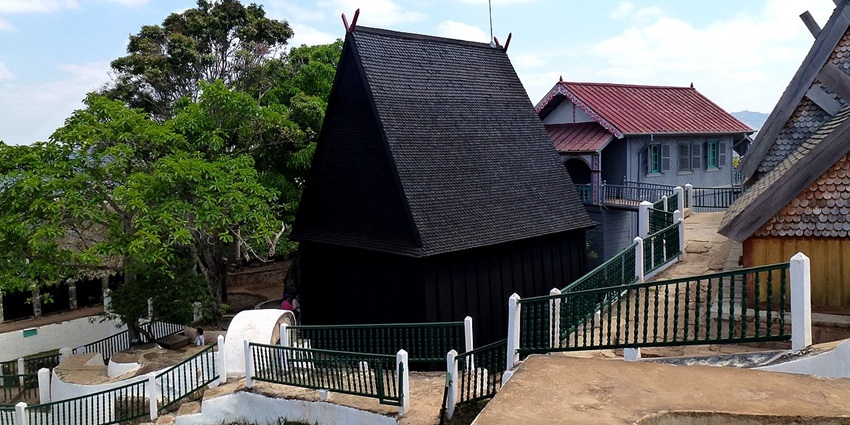
Photo: Hiroki Ogawa / Wikimedia Commons
The Royal Hill of Ambohimanga sits near Antananarivo and is one of the most famous historical monuments in Madagascar. It also has the status of being included in the World Heritage list of UNESCO. For centuries, this sacred hill served as the royal capital of the Merina Kingdom and continues to show the spirit of Malagasy identity and culture. The site comprises a Rova (royal palace), traditional houses, royal tombs, and ancient fortifications that extend over the lush forest. The stone gateways and walls built on a mixture of traditional and defensive designs stand in testimony to the ingenuity of early Malagasy craftsmen.
Entry Fee: ₹150 – 300 / Ar7,500 – 15,000
3. Independence Avenue Obelisk, Antananarivo
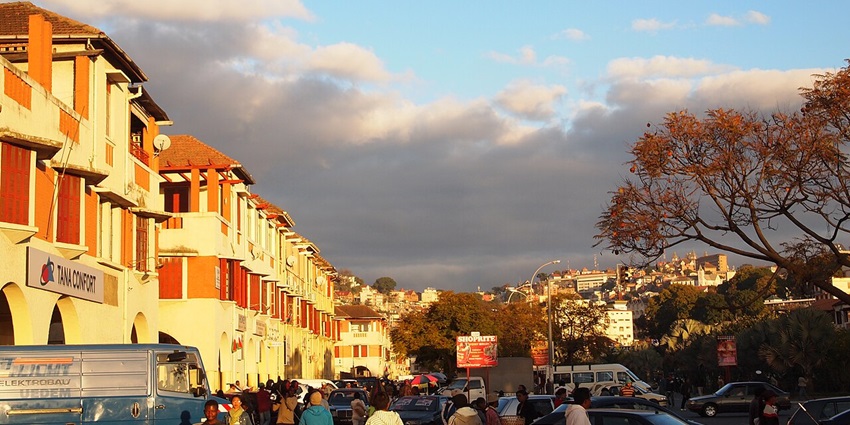
The Independence Avenue Obelisk in central Antananarivo is a monument commemorating Madagascar’s independence from French colonialism in 1960. This obelisk is the eastern terminus of Avenue de l’Indépendance and serves as a landmark because it is precisely where the first Malagasy flag was hoisted after the people of Madagascar were liberated. The obelisk has inscriptions that honour all the sacrifices and struggles of the Malagasy people for independence. The Independence Avenue Obelisk is surrounded by the bustling city centre, consisting of bustling markets, colonial-era buildings, and more.
Entry Fee: N/A
4. Andafiavaratra Palace, Antananarivo
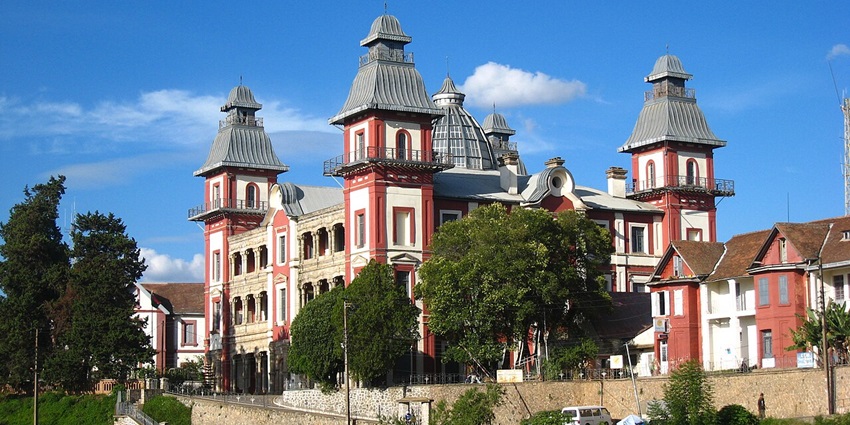
Photo: Maky / Wikimedia Commons
Andafiavaratra Palace was built in the late 1900s to accommodate Prime Minister Rainilaiarivony and sits on a hill overlooking the city. As you enjoy the view from the palace, you can truly see the beauty of Antananarivo and the surrounding area. Andafiavaratra Palace is a combination of Malagasy and European architecture as a reflection of Madagascar’s time spent as a French colony, as well as the former royal family. Inside the palace, you will see royal memorabilia, ancient documents, and historical Malagasy archaic furniture that speak to the political history of the monarch.
Entry Fee: ₹100 – 200 / Ar5,000 – Ar10,000
5. Tsingy de Bemaraha
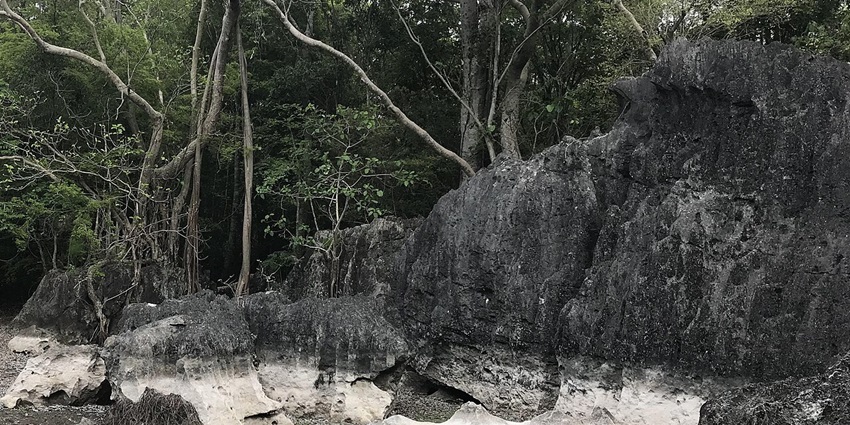
Photo: Cactus0625 / Wikimedia Commons
The Tsingy of Bemaraha is a remarkable natural monument in western Madagascar and a UNESCO World Heritage Site. Tsingy, meaning “where you cannot walk barefoot” in Malagasy, describes the karst pinnacles, which are sharp and pointy limestone formations. This unique geological feature consists of both dry deciduous forests and mangrove habitats and is a refuge for many endemic species, including rare lemurs, birds, and reptiles, making it a hotspot for biodiversity. It is possible to explore the Tsingy and the nearby area by a labyrinth of canyons, caves, and exhilarating walkways and bridges that provide an unmatched experience amongst such a dramatic landscape.
Entry Fee: ₹900 – 1,100 / Ar55,000 – Ar65,000
6. Fianarantsoa Cathedral Monument

Photo: Farragutful / Wikimedia Commons / Image For Representation Only
The Fianarantsoa Cathedral, or the Holy Name of Jesus Cathedral, is an essential historical Catholic structure located in the highland city of Fianarantsoa, Madagascar. This cathedral was built by the French settlers in 1871 when they claimed Madagascar as a French colony to develop an economy based on cash crops and missionary zeal. Fianarantsoa’s cathedral is one of the oldest and most prominent ecclesiastical buildings in Madagascar, and the structure sits high on top of the old town, offering panoramic views of the terraced hills of the surrounding countryside and red-brick houses.
Entry Fee: N/A
7. Faravohitra Cathedral Monument, Antananarivo
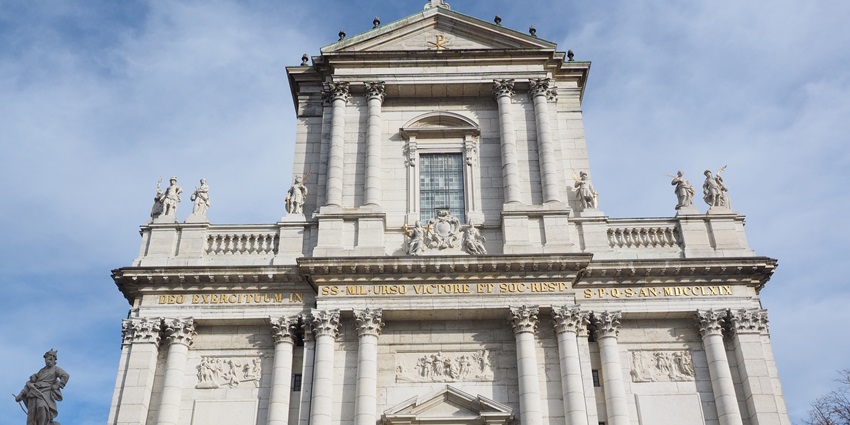
Photo: CC0 Public Domain / PxHere / Image For Representation Only
Located on Faravohitra Hill within the capital city of Antananarivo in Madagascar, the Faravohitra Cathedral Monument, or Saint John the Baptist Church, is among the most iconic religious buildings. Constructed by the Jesuit priest Joseph de Villèle in 1898, the cathedral presents a confusion of architectural elements coming out of neo-Byzantine and Romanesque styles. The red-brick facade dominates in the scorching sunlight, with arches and stained glass windows, and the tall bell tower crowns four clock faces that enable individuals in the city to see the majestic building.
Entry Fee: Varies
8. Memorial Of The 1947 Malagasy Uprising, Moramanga
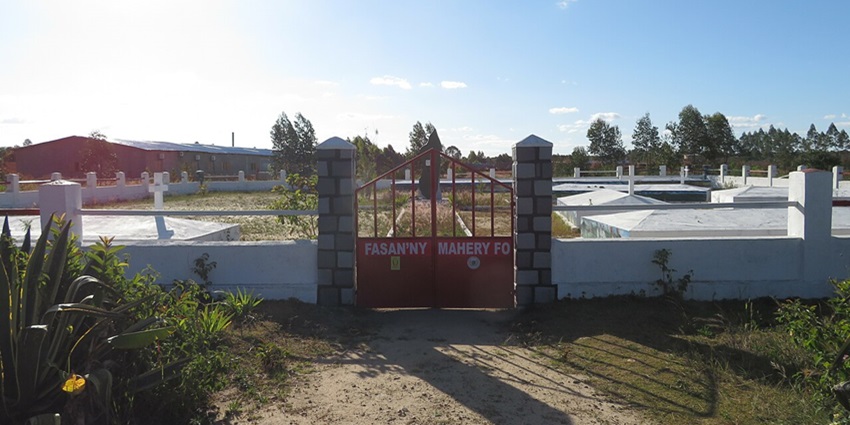
Photo: Torbenbrinker / Wikimedia Commons
The Memorial of the 1947 Malagasy Uprising at Moramanga serves as a significant monument to the thousands of Malagasy who fought against French colonialism. The monument marks the site of the March 29, 1947, bloodshed when the French brutally suppressed a nationalist uprising, killing hundreds of indigenous residents, many of whom were unarmed. The memorial features sculptures and plaques dedicated to the martyrs of Madagascar’s struggle for independence, as well as inscriptions of dates and names marking this history. The memorial is one of the major historical monuments in Madagascar, and it has extensive and profound importance for national identity.
Entry Fee: N/A
9. Clock Tower Of Antsirabe, Antsirabe

Photo: Bernard Gagnon / Wikimedia Commons
The Clock Tower of Antsirabe is a vital part of the Our Lady of La Salette Cathedral, an important religious monument in Antsirabe, Madagascar. Built between 1925 and 1931, the cathedral was designed by the architect Father Joseph Michaud under the supervision of Monsignor Jean-Baptiste Raharijaona. Standing at a height of 45 m, the bell tower stands as a characteristic aspect of the cathedral, providing the city skyline with a distinctive position. With neo-Romanesque architecture and red-bricked construction, the cathedral symbolises the colonial history of the city, where Christianity has taken hold.
Entry Fee: N/A
10. Fort Manda Monument, Mahajanga
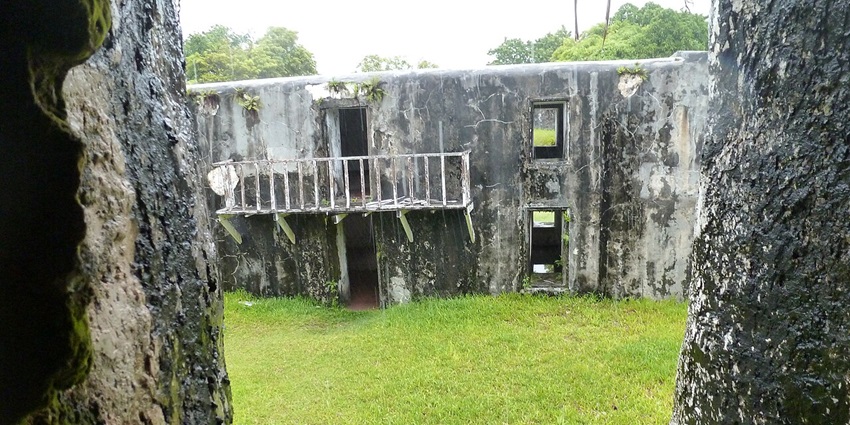
Photo: Tuxgasy / Wikimedia Commons / Image For Representation Only
Fort Manda Monument in Mahajanga is a remarkable historical fort built in 1826 and completed in 1831 by King Radama I. Built mainly to protect the eastern shore of Madagascar from foreign invasion, the fort has a circular layout which is about 70 metres (229.66 ft) in diameter, a symbol of togetherness and strength. The fort walls are thick and tall. It was built from a mixture of coral, sand, and eggshells that highlighted the ingenuity of the Merina people. The fort included barracks, officers’ quarters, an arsenal, and a prison, as well as facilities to hold up to 25,000 soldiers. Today, the fort remains a reminder of the country’s sheer history and tradition, and the fort draws designated travellers to the fort for its architecture and coastal views.
Entry Fee: Ar3,000 – 5,000
11. Andohalo Cathedral Monument, Antananarivo
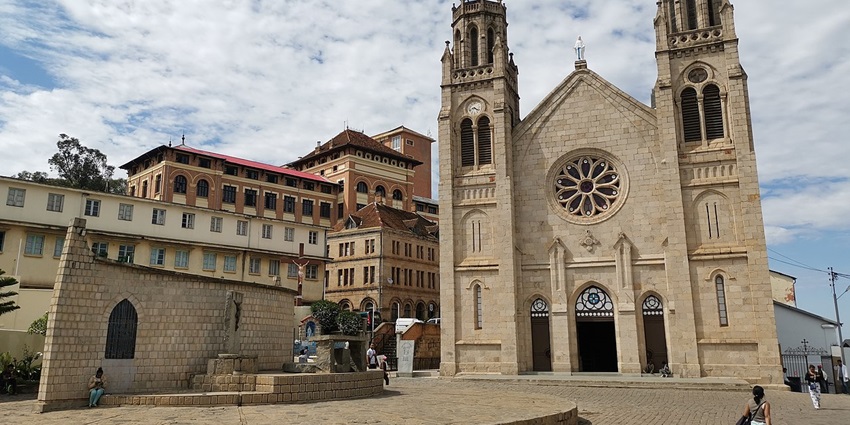
Photo: Z thomas / Wikimedia Commons
The Andohalo Cathedral Monument in Antananarivo, known officially as the Cathedral of the Immaculate Conception, is a powerful religious and historical monument in Madagascar. Between 1873 and 1890, the cathedral was constructed in a neo-Gothic style on a historically important site called Andohalo Hill, which is significant in history as it is the place where the earliest Malagasy Christians were notoriously martyred under Queen Ranavalona I. The Andohalo Cathedral is important to Christians because the location has become a testament to faith and endurance in tribulation.
Entry Fee: Ar15,000 – 30,000
12. Monument Of The Malagasy National Assembly, Antananarivo
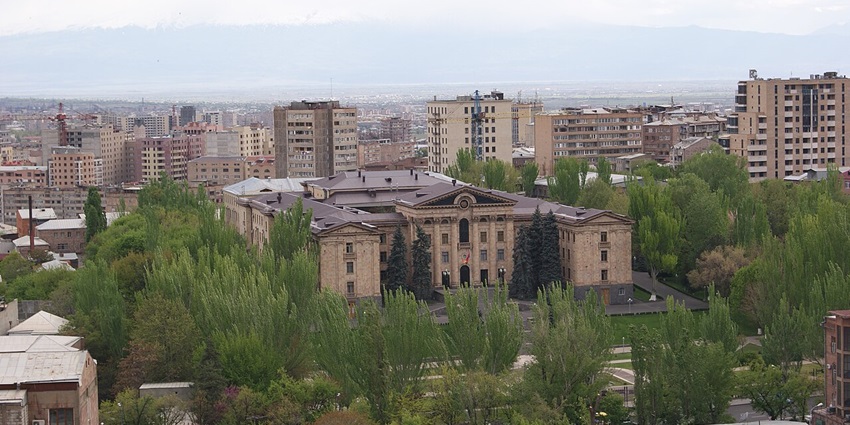
Photo: Armineaghayan / Wikimedia Commons / Image For Representation Only
The Monument of the Malagasy National Assembly in Antananarivo is an important civic site that commemorates Madagascar’s commitment to democratic governance. The monument is located near the Tsimbazaza Palace, which houses the National Assembly, and marks the creation of the country’s legislature in 1958. The National Assembly has 153 elected members and sits as the lower chamber of Parliament and its corresponding representative of the people. The monument is a tribute to the people and the rule of law in Madagascar’s legislative history.
Entry Fee: N/A
From ancient royal residences to colonial obelisks and military memorials, these monuments in Madagascar represent the island’s layered past and rich cultural evolution. They are not just impressive pieces of architecture; they are also powerful expressions of identity, autonomy, and endurance. Whether you are a history junkie or simply an interested traveller, taking in these sites will enrich your experience of Madagascar in a meaningful way with TripXL.
Cover Photo: Dennis van de Water / Shutterstock


 WhatsApp
WhatsApp
 Twitter
Twitter









